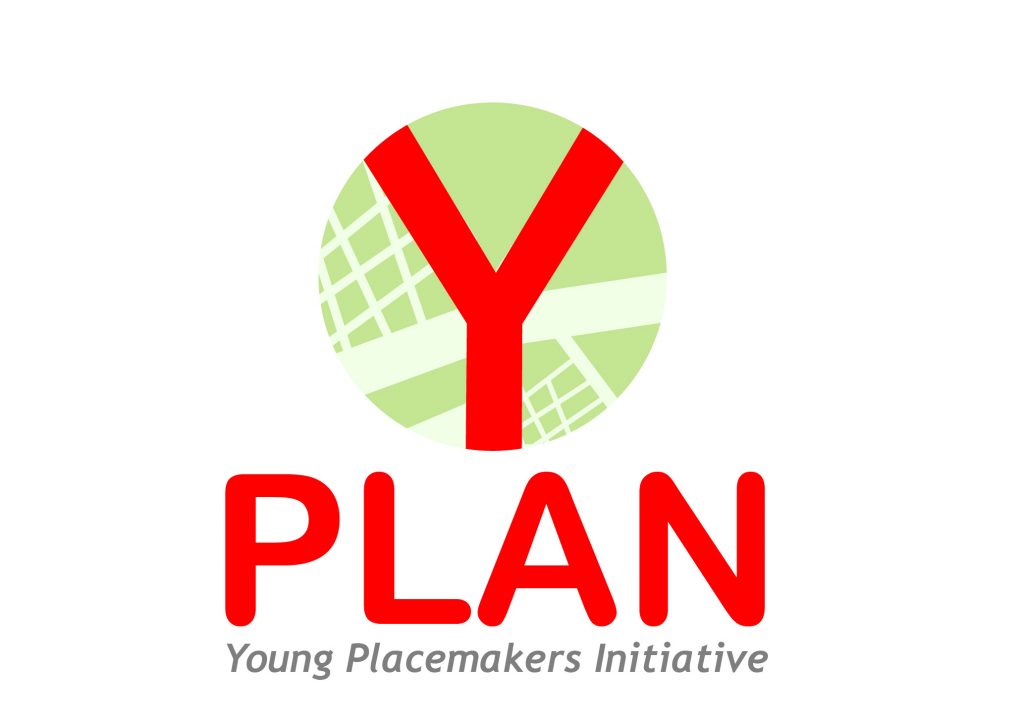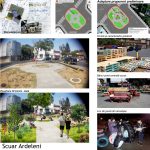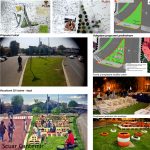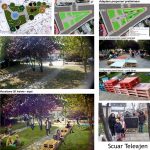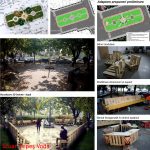https://www.youtube.com/watch?v=lsgm9z2kJv8
Public space quality represents one of many criteria showing that Romania’s cities are lagging compared to Western cites. This essential part of every city, that should cover at least 30% of its total surface (according to UN-Habitat) has a central role when it comes to the success of already famous cities such as Barcelona, Copenhagen or Berlin. In Romania’s cities, public space is rather neglected. It is used mainly as a “place to park your car”, even when we talk about a sidewalk or a small green space. The case of Bucharest is not different: a few parks and gardens are used by citizens, while the other public spaces are abandoned and/ or used for transit. Public space has won a place on the public agenda only recently, and the most creative interventions resulted from bottom-up initiatives of architects, planners, designers, anthropologists, NGO’s. Some of these projects were even considered as finalists of the European Public Space Awards.
Yplan – Young Planners Initiative addresses both the need for reclaiming Bucharest’s public spaces and the need for youth civic involvement and urban education. Young people can play important roles in public space development and community building: they can get actively involved in the rehabilitation of their neighbourhood through direct actions (for example cleaning a public space) or by demanding better public spaces from the local administration, they can join NGOs and project teams in the field, or, on the long term, they can choose to study to become planners, architects or designers.
With this in mind, a team of Romanian and Swiss urban planners and architects decided to teach and empower high school students, equipping them with knowledge and tools for public space interventions. The team held short presentations, workshops and debates in 9 high schools in Bucharest. Following the workshops, a group of high school students, together with several students from “Ion Mincu“ University of Architecture and Urban Planning joined the Yplan project. The group was involved in a series of workshops and activities (for example urban walks) targeting the redesign of 8 abandoned public spaces. The aim of these advanced workshops was to help the high school students understand and replicate the process of reviving an abandoned public space.
In order to facilitate the learning process, the selection of the 8 public spaces to be redesigned and idea generation for the actual interventions, two main tools were developed within the project. The first one consists of a guide that briefly explains the process of interventions in public spaces, answering questions such as: why is public space important, how do you plan your intervention, aspects of urban design, how to involve community and how to cope with local administration and legal aspects (download link: https://www.dropbox.com/sh/a63g1ambmc63wnh/AABH_Z-mByuC-TXRRxTKCCMsa/Ghidul%20proceselor%20de%20planificare%20urbana.pdf). The second one, a crowdsourcing platform, was used to map abandoned public spaces in Bucharest with a high potential for interventions. The Yplan Geoblog was also used to choose the sites for the proposals.
The Yplan Geoblog can be used via https://play.google.com/store/apps/details?id=com.yplan.app or from our website: www.yplan.ro => you can map places in any city from the world
After analysing the abandoned public spaces mapped on the Geoblog, 2 intervention areas were chosen for in-depth analysis. These areas in need of a process of urban regeneration are larger than the actual intervention sites, so that the context can be better understood. One could notice that several abandoned public spaces clustered along two axes leading to downtown Bucharest. Hence, the Yplan interventions were planned as pieces of a larger public space system with potential for urban regeneration at neighbourhood and city scale.
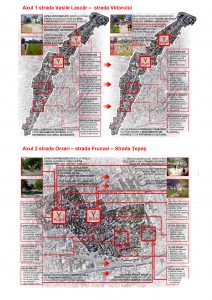
After 4 urban walks, 1 treasure hunt, 2 visits to the District Administration (2nd District) and 6 studios for urban analysis and idea generation, the final design proposals were drafted. After negotiations with the representatives of District 2, the 4 public spaces to be redesigned within the project were chosen. After 3 weekends of hard work and with a lot of support from the local community the 4 public spaces were furnished and are now ready to be used.
Photo collages showing the evolution of the 4 public spaces, from sketches, to renderings, to implementation.
As a result of the project, over 550 high school students gained basic knowledge regarding the role of public spaces in our cities, 30 of them understand the process of revitalizing abandoned public spaces and Bucharest has 4 redesigned places for community and ideas and real projects for at least 4 other urban interventions. The 8 public spaces targeted by the project are just the start of a long term goal of the Yplan team, to revive or reclaim 100 public spaces for Bucharest.
Nevertheless, the implemented interventions have a rather temporary character, following the Lighter – Quicker – Cheaper methodology developed by PPS (http://www.pps.org/reference/lighter-quicker-cheaper/). Their main role is to make the public spaces usable and attractive for the local community, raising awareness, so that the local administration acknowledges the need for a larger urban regeneration project.
4 / 100 done !
But why 4 out of 100? Because this is the larger goal of Urban 2020 association, to directly support the revitalization of 100 abandoned public spaces as part of a public policy led by the local administration.
Additional information about the Yplan project can be found at:
www.yplan.ro or https://www.facebook.com/YplanProject/
Resources
The Yplan youth guide for urban planning in public spaces
The Yplan Geoblog for mapping abandoned public spaces (also works for cities other than Bucharest)
https://play.google.com/store/apps/details?id=com.yplan.app
The Yplan Book including the main results of the project
https://issuu.com/yplan/docs/yplan_book

